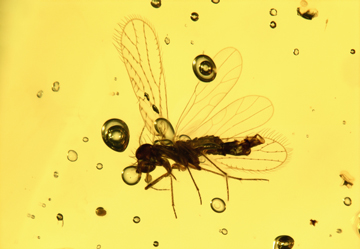Abstract
The Fossil Insect Network was created 33 years ago in 1996 in Strasbourg, France, under the auspices of the European Science Foundation. Since then, several meetings were organised: 1998—First International Palaeoentomological Conference in Moscow, Russia; 1998—World Congress on Amber Inclusions in Vitoria-Gasteiz, Basque Country, Spain; 2000—Brazilian Symposium on Palaeoarthropodology in Ribeirão Preto, Brazil; 2001—Second International Congress on Palaeoentomology, Fossil Insects, Kraków, Poland. This Congress in Kraków was also the origination of the International Palaeoentomological Society. The year 2005 was very important as three meetings, i.e. the Palaeoentomological Conference, the World Congress on Amber Inclusions, and the International Meeting on Palaeoarthropodology were decided to merge together as Fossils X3. This decision was made in Pretoria, South Africa. Following the International Congresses on Fossil Insects, Arthropods and Amber, Fossils X3 continued in 2007—Vitoria-Gasteiz, Basque Country, Spain, 2010; in Beijing, China, 2013—Byblos, Lebanon; and 2016—Edinburgh, Scotland, where ‘International Fossil Insects Day’ was declared and is now celebrated on each 1st of October.
References
Azar, D., Szwedo, J., Jarzembowski, E.A., Evenhuis, N. & Huang D.Y. (2018) “Palaeoentomology”: A modern journal for a science dealing with the past. Palaeoentomology, 001 (1), 1–2.
https://doi.org/10.11646/palaeoentomology.1.1.1
Iturralde-Vinent, M.A. & MacPhee, R.D.E. (1996) Age and paleogeographical origin of Dominican amber. Science, 273 (5283), 1850–01852.
https://doi.org/10.1126/science.273.5283.1850
Nascimbene, P.C. (Ed.) (2019) Abstracts. 8th International Conference on Fossil Insects, Arthropods & Amber, Santo Domingo 2019, 139 pp.

